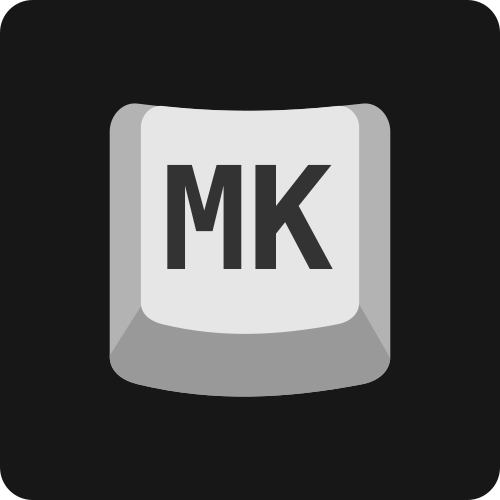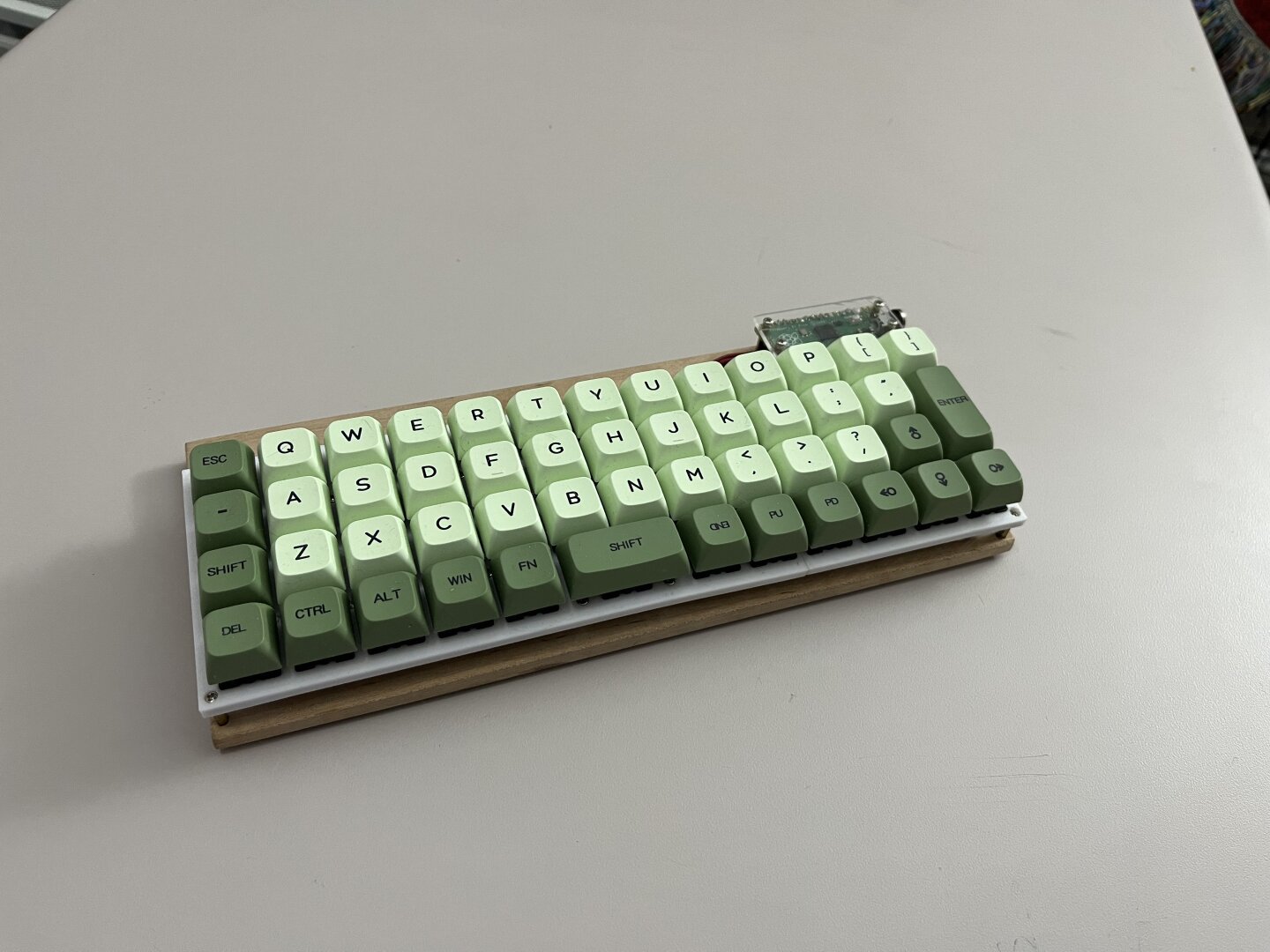

Super satisfying, right? Mine are all in KMK, and I’ve only done one half-assed PCB design (I literally just left a linear row of vias to hand-wire to the RP2040), with the rest being hand-wires. When you’re done, and it works as well as a commercial keyboard but you can see all your choices made real, it’s really cool.
One of mine looks a tiny bit like yours:



Thanks. Yours came out brilliant, btw. I think the old school sandwich cases are perfect for low-profile switches and caps. Mine here uses “half-height” or “dwarf” Outemus that have standard MX footprint, and a profile from Aliexpress called “JWA”.
For higher-profile designs, you can tweak the concept to stack additional layers (swill can generate them, but I still prefer to directly edit the DXFs after) and have the 3D-printed spacers extend out and around like a shroud. You can also just put some threaded inserts into a larger 3D-print and have a kind of top-mount.